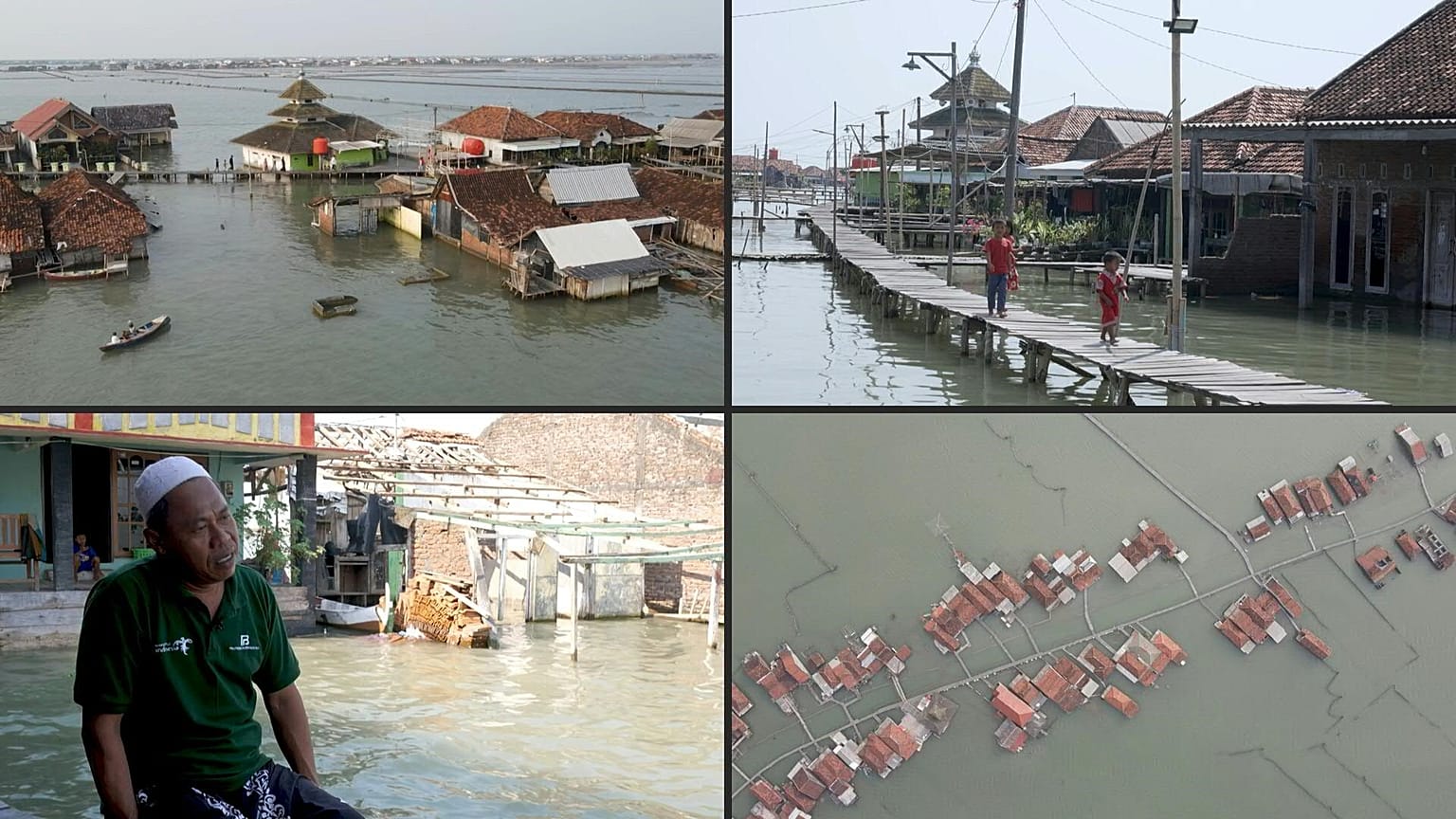More than 200 people live in what is one of Indonesia's fastest-sinking areas.
In Indonesia, a Javan coastal village is being swallowed by the rising tides. Residents in Timbulsloko, in the Demak region, have been forced to adapt to a new life on the water.
More than 200 people have stayed in what is one of the country's fastest-sinking areas.
The landscape of lush rice paddies has turned into a network of boardwalks and canoes in an alarming sign of how climate change could upend coastal communities around the world.
Residents have been modifying their houses to keep dry, but others see no future in Timbulsloko.
The sinking village in Indonesia
In Timbulsloko, many buildings including the town’s mosque are already submerged beneath the water.
"It's only memories now," says 49-year-old Sulkan, who like many Indonesians goes by one name. "Why? Because the place is already flooded by the tide."
Timbulsloko residents' lives have been drastically altered by rising sea levels, coastal erosion and excessive groundwater extraction causing the land to sink.
The coastline has also been left vulnerable to floods after locals cut down mangroves for fishing ponds in the 1990s.
Water has since reached five kilometres inland around Timbulsloko and the surrounding Demak region, according to Denny Nugroho Sugianto, professor at nearby Diponegoro University.
He calls it a "slow disaster" happening before the world's eyes.
Data shows some areas around Timbulsloko sinking up to 20 centimetres annually, double the rate recorded in 2010.
This is the “largest rate of land subsidence" ever recorded in the area, according to Sugianto.
There is ‘no future’ for Timbulsloko’s residents
Large parts of Indonesia’s megalopolis capital Jakarta are expected to be submerged by 2050, researchers say, but villagers along the Javan coast are on the front lines of the emergency.
Sulkan was forced to move his kindergarten from an old wooden building next to his house to another structure on higher land to prevent it from being lost.
Residents have elevated the floors of their homes by adding soil and then installing wooden decks to keep themselves dry as the floods become more severe.
This has left them with shrinking space, forcing anyone entering to stoop low to avoid bumping their heads.
Sularso, 54, says he has raised his floor three times since 2018, by a total of 1.5 metres, spending around 22 million rupiah (€1,322).
"For me, there is no future," the fisherman says. "This village will be gone in less than five years. We can't build, we can't do anything."
He says his floor can still be submerged in water during high tides, leaving him worried high waves could collapse his home.
Housewife Khoiriyah, 42, says she has had difficulty buying groceries or taking her three children to school because of flooded roads.
"Life is harder now. Whenever the water comes inside my house, I always wish I could move out," she says.
Yet the problem is due to become even worse as climate change takes hold.
The UN's Intergovernmental Panel on Climate Change (IPCC) says an increase of two degrees Celsius from pre-industrial times could raise sea levels by 43 centimetres by the next century.
‘As long as there are still houses, I’m staying’
The village's cemetery has also been raised to prevent it from sinking, with villagers installing a wood fence, nets and tyres to keep the waters at bay.
Residents have also crowdfunded a boardwalk to connect their houses and give them access to their relatives' graves.
Timbulsloko's younger generation often spend their time outside their homes, escaping the floods that haunt their everyday lives.
"Life is monotonous here. The youths often go out as they hate being in their house," 24-year-old Choirul Tamimi says.
Before the use of boats in the village, Tamimi says he would walk through the flood on his way to work with a change of clothes.
"When I came back from work, it's annoying because I'm not only tired, but I also got wet," he says.
Professor Sugianto has called on the government to expand piped water access to residents to reduce groundwater use and look to sand filling to replace what has been eroded.
"Without restoring the original coastline, we cannot solve this problem sustainably," the professor said.
Yet those who remain in Timbulsloko refuse to surrender to the elements.
Sulkan insists that he will stay to keep his kindergarten open and teach children like the ones who once stood on the now-submerged road.
"As long as there are still neighbours, there are still houses, I'm staying here," he said.


















